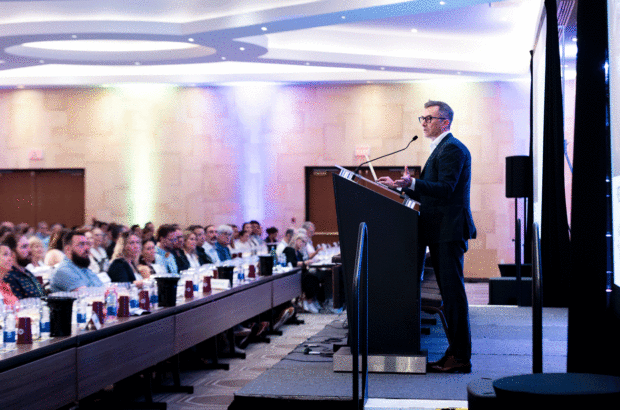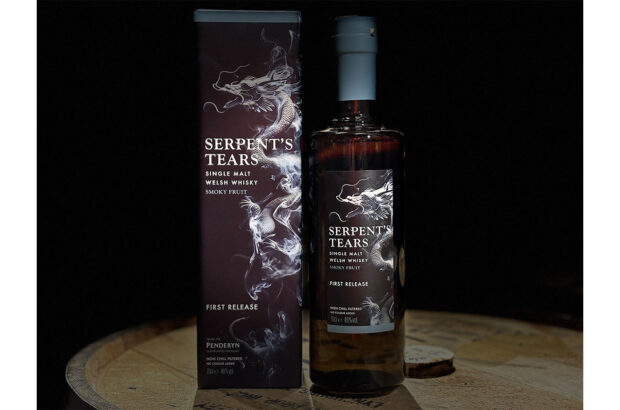Producer of some of the world's best white wines, owner Dominique Lafon remains ambitious, with ventures in Mâcon and Oregon. Stephen Brook visits the famous Meursault estate...
Domaine des Comtes Lafon at a glance:
Area 17 hectares
Main white vineyards Meursault Village: Clos de la Barre and Désirée
Meursault Premiers Crus: Bouchères, Poruzots, Gouttes d’Or, Charmes, Genevrières, Perrières; also Montrachet Grand Cru (0.32 ha)
Red vineyards Volnay Premiers Crus: Santenots-du-Milieu, Champans, Clos des Chênes; also Duresses Premier Cru in Monthélie
Our encounters began almost 30 years ago, yet Dominique Lafon has often given me an impression of unease; of wishing he were doing something else other than pouring wines for inquisitive journalists. He’s never rude, but can be just a bit grouchy.
But when I recently strolled into his office in Meursault I found him behind his desk wreathed in smiles, his face just visible through a veil of cigarette smoke. He’s striding into middle age now and must be shedding some of his rough edges.
View all of Decanter’s Domaine des Comtes Lafon tasting notes
Sometimes, and plausibly, described as the world’s best producer of white wine, Dominique Lafon has not always had an easy time of it. When he was a young man, strained relations with his father René meant that he spent much of the early 1980s away from the estate, although he always returned for the harvest. It was only in 1987 that he took over from his father in running the estate.
In the late 1980s the domaine was handicapped by the fact most of it was run on a sharecropping basis – Comtes Lafon only received half the grapes, the other half going to the sharecropper. It would take Dominique until 1993 to unweave the contracts and gain total control over his vineyards.
Lafon would be the first to admit that he was aided by owning a clutch of very good vineyards: he had parcels in the top Meursault crus, as well as a precious few vines of the Montrachet grand cru and some hectares in the very best sector of Volnay’s santenots premier cru. Expansion has been hesitant, with only a few purchases until 2010, when he and Jean-Marc Roulot were able to buy (from Labouré-Roi) and divide between them Domaine René Manuel. This allowed Lafon to add Meursault premiers crus Porusots and bouchères to his portfolio. ‘I think it makes me the only grower in Meursault with parcels in all six of the best crus.’
Worldly success hasn’t caused him to relinquish care of these vineyards. Indeed, when I went to see Lafon some 20 years ago, he arrived in the courtyard atop a tractor, clad in blue overalls. The average age of the vines is around 40 years. Yields are kept low, averaging 35hl/ha over the past decade. This allows him to pick at full ripeness without having to worry about low acidity.
Maintaining typicity
The domaine became organic in 1995 and has been biodynamic since 1998. Lafon admits he’s not clear why biodynamism works, but in his experience it does. It means that he has to accept a certain level of disease such as mildew, but maladies are common in burgundy anyway. some claim that vines farmed biodynamically develop a resistance to disease, but Lafon is sceptical and finds little evidence of that.
Where Lafon excels is in maintaining the typicity of each of his crus. Other than the use of new oak, there is little variation in winemaking techniques. Typicity can vary according to vintage but the Clos de la barre, a Meursault village wine, is quite robust and serious, while the Charmes Premier Cru is rounder and more seductive, yet not lacking in backbone. The premiers crus of genevrières and Perrières in particular show more grip and overt minerality. His Montrachet grand Cru is marked by its finesse and great length of flavour.
Montrachet is the only wine to be aged entirely in new oak. The premiers crus are aged in a proportion that varies from 25% to 40% and the wine stays in wood for 16 months. Lees-stirring is used sparingly – ‘usually when the fermentation is slow to finish or when the wine is reduced’, he says. His cellars are notoriously cold, so fermentations can be slow and the young wines benefit from long ageing before being racked and fined.
At tastings over the years I have seen the exacting Dominique Lafon unhappy with some of his own wines. He blames defective corks as much as premature oxidation (‘premox’) for their poor showing. He takes the issue very seriously, while expressing some annoyance at false claims. ‘Some American bloggers have detected premox in my 1995s, but it’s not so. I think that’s because many Americans are not used to drinking mature white Burgundies. If a wine has evolved aromas after 18 years, that’s natural, not premature, oxidation.’
Meursault to Mâcon
Since 2009 he has been studying, with Professor Denis Dubourdieu from Bordeaux, the constitution of the final 10% of press wine, which apparently contains polyphenols that themselves contain molecules that encourage oxidation. ‘We allow that portion to oxidise, the polyphenols precipitate and are removed, and the remaining wine can be incorporated with the rest.’ He has also increased sulphur dioxide levels. Whether these and other initiatives will crack the problem, only time will tell, but he seems confident.
It wasn’t long ago that Meursault was perceived as a big, buttery wine, in contrast to the more linear, mineral wines from Puligny- or Chassagne- Montrachet. Yet tastings over the past decade have shown that Meursault can produce wines every bit as racy and mineral as those from its neighbours.
Lafon has a view. ‘From the 1960s wines became fatter and heavier. That’s because they were made from super-ripe grapes from vineyards that were not ploughed and drenched in fertilisers. Improvements in farming since the 1990s mean the grapes have better acidity and more precision. Also the new generation of winemakers works with more rigour in the cellars – they’re better trained and have tasted widely. Remember too that harvests in the past were less efficient than they are today, so there was a greater risk of oxidation and heaviness. I also suspect that some critics, long ago, described Meursault as fat and buttery, and others in the wine trade just repeated the assertion.’
Given the eminence of the domaine, it may seem surprising that in 1999 Lafon began to buy parcels of vines in Mâcon. The estate, based in the village of Milly-Lamartine, is known as Les Héritiers du Comtes Lafon. Lafon expanded into Mâcon because even an estate of great renown and, one assumes, profitability, struggles to buy good vines in the Côte d’Or. ‘In 30 years here I’ve added no more than four hectares or so. It’s just too expensive. I have a restless personality, and by 1999 felt ready to take a risk. Mâcon was ideal: an hour away, the same soil, the same grape – it was easy! I could have bought vineyards in the Midi, as others were doing, but that would have meant working with different soils and varieties. Moreover, there are parcels available for purchase in Mâcon, and I could gradually expand, as I have done. I’m learning about unknown terroirs with great potential. It’s a project separate from the domaine, financed with borrowed money, and the whole family is involved, so I had to think things through very clearly. I don’t make much of the Meursault connection, I want it to stand on its own feet. But it’s been very successful, and we are making a profit – at least enough profit to buy a new tractor!’
Passion for Pinot
He has also been drawn to Oregon, though as a consultant rather than proprietor. Some years ago he became involved in the Evening Land project, which produces Chardonnay and Pinot Noir from various sites on the West Coast. Lafon only works with the Oregon vineyards. ‘That’s because I believe Oregon is best place outside Burgundy to make Pinot – it has the perfect climate, less sunny and hot than California. At Evening Land we go for a lighter touch, without too much extraction or pigeage (punching down the cap of grape skins). The top cuvée, La Source, is the most delicate wine.’
Although Lafon is inevitably associated with white wine, his Santenots premier cru from Volnay can be glorious too, and he also makes Volnay reds from the premiers crus Champans and Clos des Chênes, as well as others. Like the white wines, the reds are fermented with natural yeasts after a gentle destemming that leaves many intact berries in the vat. Maceration is relatively short, but the ageing, in up to a third new oak, can be as long as 22 months. ‘I’d love to expand the production of reds, but I can’t expand the domaine in that direction. I’d want [Volnay premiers crus] Caillerets or Clos des Chênes or Pommard’s Rugiens, or Grèves in Beaune, but in practice it would be very hard to find such parcels.’
Although he can seem arrogant, Lafon was pure humility when I asked who had influenced him. He paid tribute to Burgundy-based wine broker Becky Wassermann, for whom he worked in the 1980s, as well as to legendary names from the past: Henri Jayer, Gérard Potel, Jacques d’Angerville, and Hubert de Montille – the latter still very much with us.
Lafon now seems at the height of his powers, in total control of his vines and winemaking. There are no mysterious processes, no secrets of the trade, but an immense competence, based on 30 years of experience, that allows him to fine-tune each wine according to the vintage. There were some wines in the ’80s that disappointed, but since 1990 he has hardly put a foot wrong. Long may that continue.
Domaine des Comtes Lafon: a timeline
Comtes Lafon: a timeline
1864
Birth of Jules Lafon
1894
Lafon marries Marie Boch, whose family owns an estate in Meursault
1918
Jules Lafon receives the title of papal count
1931
Lafon resigns as a lawyer to work full-time at the domaine
1940
Death of Jules Lafon
1955
Jules’s surviving son Henri considers selling the domaine, but Henri’s son René (pictured above with his son Dominique) opposes the idea
1956
René Lafon takes control and names the estate Domaine des Comtes Lafon
1958
Birth of René’s son Dominique
1987
Dominique Lafon takes control of the domaine
1993
Sharecropping agreements end, giving Lafon complete control
1998
The domaine becomes fully biodynamic
1999
The Lafon family begins acquiring vineyards in Mâcon
2007
Dominique Lafon becomes a winemaking consultant for Evening Land Vineyards in Oregon
2010
The domaine acquires half of Domaine René Manuel, thus expanding by 3.5ha







